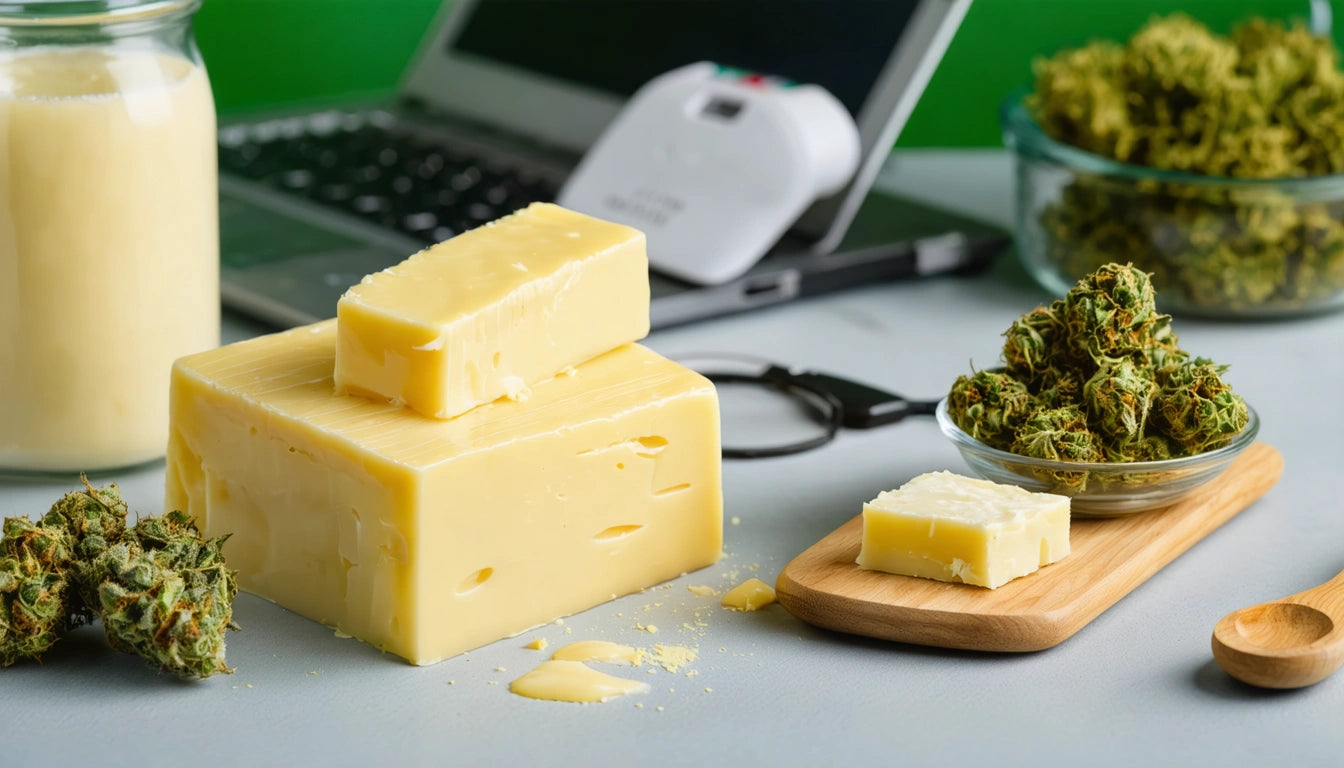Table of Contents
- Cannabutter Basics: Ingredients and Equipment
- Finding the Perfect Ratio: How Many Grams Per Stick of Butter
- Step-by-Step Guide to Making Cannabutter
- Potency Tips: How to Make Canna Butter Stronger
- Butter Options: Regular Butter vs. Ghee for Cannabutter
- Storage Solutions for Long-Lasting Cannabutter
- Canna Oil vs. Butter: Which Infusion Is Right for You?
- Advanced Techniques and Alternative Methods
How to Make and Optimize Cannabutter: Tips, Techniques, and Comparisons
Cannabis-infused butter, commonly known as cannabutter, serves as the foundation for countless edible creations. Whether you're a seasoned chef or new to cannabis cooking, mastering how to make canna butter can elevate your culinary experience. This comprehensive guide covers everything from basic recipes to advanced techniques for creating potent, consistent infusions.
Cannabutter Basics: Ingredients and Equipment
Before diving into the process of making cannabutter, gathering the right ingredients and equipment is essential. The quality of your cannabutter depends significantly on your starting materials.
Essential Ingredients
- Cannabis flower (7-14 grams per cup of butter is typical)
- Unsalted butter (regular or clarified)
- Water (optional, helps prevent burning)
Necessary Equipment
- Grinder
- Baking sheet
- Saucepan or slow cooker
- Thermometer
- Cheesecloth or fine strainer
- Storage containers (airtight containers or resealable mylar storage bags work well for preserving freshness)
Finding the Perfect Ratio: How Many Grams Per Stick of Butter
One of the most common questions when learning how to make cannibus butter is determining the right cannabis-to-butter ratio. For a standard stick of butter (1/2 cup or 113g):
- Mild potency: 3.5 grams (1/8 oz)
- Medium potency: 7 grams (1/4 oz)
- High potency: 14 grams (1/2 oz)
Remember that potency also depends on the THC content of your starting material. For consistent results, consider the estimated THC percentage of your flower when calculating dosage, as detailed in this step-by-step THC butter guide.
Highlight: For beginners, start with a lower ratio of cannabis to butter (3.5g per stick) and gradually increase in future batches as you become familiar with potency and effects.
Step-by-Step Guide to Making Cannabutter
Learning how to make cana butter requires attention to detail. Follow these steps for consistent results:
1. Decarboxylation
This crucial first step activates the THC in your cannabis:
- Preheat oven to 240 °F (115 °C)
- Break up cannabis buds into small pieces
- Spread evenly on a baking sheet
- Bake for 30-40 minutes, stirring halfway through
- Cannabis should turn light to medium brown and be dry to the touch
2. Infusion Process
After decarboxylation, it's time to infuse the butter:
- Melt butter in a saucepan over low heat (add water if desired)
- Add decarboxylated cannabis once butter is fully melted
- Maintain temperature between 160-180 °F (never exceeding 200 °F)
- Simmer for 2-3 hours, stirring occasionally
For a more detailed breakdown of this process, check out this complete pot butter guide.
3. Straining and Storage
- Line a fine mesh strainer with cheesecloth over a bowl
- Pour the butter mixture through the strainer
- Allow to drain fully (avoid squeezing to prevent adding chlorophyll)
- Refrigerate the strained butter until solid
- If water was used, separate it from the solidified butter
Potency Tips: How to Make Canna Butter Stronger
For those wondering how to make canna butter stronger, several techniques can enhance potency:
- Longer infusion time: Extend to 4-8 hours in a slow cooker
- Higher quality starting material: Use flower instead of trim or shake
- Double infusion: Use already-infused butter to make a second batch
- Add concentrates: Incorporate kief or hash for increased potency
According to this comprehensive guide on potent infusions, temperature control is critical when increasing potency to avoid degrading THC.
Butter Options: Regular Butter vs. Ghee for Cannabutter
When considering the best butter for cannabutter, two main options emerge:
Regular Butter
- More accessible and affordable
- Contains milk solids that may burn during long infusions
- Shorter shelf life due to dairy content
Ghee (Clarified Butter)
- Higher fat content for better cannabinoid absorption
- Longer shelf life at room temperature
- Less likely to burn during the infusion process
- Dairy-free alternative for those with sensitivities
The debate of cannabutter with ghee or regular butter often comes down to personal preference and intended use. For longer infusions or storage, ghee offers distinct advantages.
Storage Solutions for Long-Lasting Cannabutter
Proper storage is essential for maintaining potency and preventing spoilage:
- Refrigeration: Store in an airtight container for up to 2 weeks
- Freezing: Portion and freeze for up to 6 months
- Vacuum sealing: Extends shelf life significantly
For long-term storage, consider using high-quality resealable storage bags that protect against light and air exposure, which can degrade cannabinoids over time.
Canna Oil vs. Butter: Which Infusion Is Right for You?
Understanding the canna oil vs butter comparison helps determine which is best for your needs:
Cannabutter Advantages
- Rich flavor enhances baked goods
- Traditional choice for classic recipes
- Solid at room temperature, ideal for certain applications
Canna Oil Benefits
- Longer shelf life than butter
- Versatile for both cooking and baking
- Suitable for plant-based diets
- Often easier to dose consistently
For those interested in oil infusions, this guide to cooking with cannabis oil provides excellent alternatives to butter-based recipes.
Advanced Techniques and Alternative Methods
Beyond basic cannabutter, several advanced techniques can enhance your infusions:
Using Specialized Equipment
Devices like the Magical Butter machine simplify the process and maintain precise temperature control. Learning how to make canna sugar with magical butter machine opens up even more culinary possibilities.
Water Curing
This pre-treatment process removes chlorophyll and plant matter that contribute to grassy flavor:
- Soak ground cannabis in distilled water for 4-7 days
- Change water daily until it runs clear
- Dry thoroughly before decarboxylation
For those looking to create exceptional edibles, this ultimate guide to canna-infused products covers additional techniques for refining your cannabutter.
Whether you're making classic brownies or exploring gourmet cannabis cuisine, mastering cannabutter provides a versatile foundation for endless culinary exploration. With practice and attention to detail, you'll develop a signature method that delivers consistent, high-quality results every time.











Leave a comment
All comments are moderated before being published.
This site is protected by hCaptcha and the hCaptcha Privacy Policy and Terms of Service apply.